Kutani Ware

The origin of Ko-Kutani
Kutani ware date back to the early Edo period, that being around 1655. The first Lord of Daishoji, Toshiharu Maeda (part of the Kaga-han) focused his efforts on developing pottery, although there have been found gold mines in the Kutani area (modern day: Kutanj, Yamanaka Town, Ishikawa Prefecture). Goto Sajiro, who had been engaging in mining and industry development was dispatched by Toshiharu to Hizen Arita, in order to master their pottery technique. An own Kutani klin was established with the beginning of the adoption of their new skill. For unknown reasons, however, the klins in Kutani disappeared in the 18th century, around 1730. Around this period these were ceramics fired, and these are now known as "Ko-Kutani". These Japanese multicolored over glazed porcelain is incredibly precious and highly appreciated due to its unique, formal and vigorous beauty.
Multicolored style of Kutani Ware
After the Ko-Kutani vanished, approximately 80 years after, the revival of Kutani began, with Kanazawa experience the opening of the Kasugayama klin. A lot of different klins then appeared, each with their own, individual and unique style of design. Among these, we have the Mokubei style of the Kasugayama klin, and the Yoshida klin, who attempted to do similar Ko-Kutani ware, as well as the red and gold beautiful, incredible designs of the Eiraku klin. These is a famous design, left to us by the painter Kutani Shoza, the design is named "Saishiki-kinrande", and it is a particular piece of art, since it mixes all the Kutani styles with the use of modern paint. This period also marks the beginning of the exportation of Kutani wares to Europe. The best quality about Kutani wares is their multicolor over glaze enamel images. Nowadays, their production is growing rapidly, more than in any other recorded period.
Typical style of Kutani Ware
Ko-Kutani - Approximately 350 years ago
Guided by Morikage Kusumi, expert from the Kanoschool of Japanese painting, this style prospered. With design considered mighty and lovely, and a hairline with five painting colors (red, purple, dark blue, yellow, green) this style attacks with subtle, yet dynamic charm.

Mokubei - Approximately 200 years ago
Around 80 years after the Ko-Kutani's decline went down, the Kasugayama klin was founded. Aoki Mokubei introduced to the world his own style, the Mokubei style, with Chinese style overlay and figures drawn in five Kutani colors, suspended on a base red layer.

Yashidaya - Approximately 180 years ago
A style that restored the one of Aote Ko-Kutani. With green, yellow, dark blue and green, Yoshidaya painted the surface of the whole plate without the use of red. There is a unique feeling attached to the style of Yashidaya, mostly because of the detailed patterns and the dignified style present in the art work.
Iidaya - Approximately 170 years ago
The level of detail in the Akae style of painting is incredible, and there are also many golden ornamentations that are introduced into the designs of this particular style.
Shoza - Approximately 160 years ago
Bringing together elements from all the techniques that have gone before them, this Japanese style departs from tradition by using Western materials. This is the technique that has been adopted by the Kutani production site ever since the Meiji Era.
Steps in the Kutani Ware Process
1. Quarrying Out Stones

Quarry out potter's stone form Komatsu City or Yamanaka Town in Ishikawa prefecture
2. Grinding
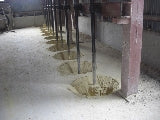
grind the stone into fine earth
3. Soaking
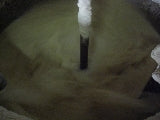
Soak the earth in water to remove floating material, such as iron.
4. Kneading
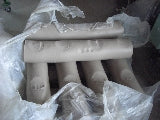
Remove the air inside the clay which causes cracks and strains
5. Forming

Form with potter's wheel or molding
6. Drying and Finishing
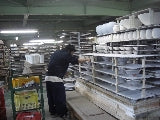
Put pedestal and knob. finish brim.
7. Unglazed Firing
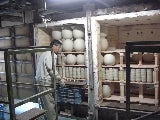
Fire it at 1470ºF centigrade for 8 hours
8. Preliminary Drawing
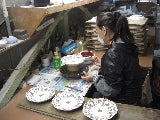
Draw an outline with "Sometsuke Gosu" (dark blue paint) made of cobalt oxide.
9. Enameling
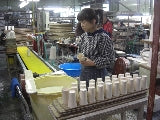
Enamel the surface of pottery
10. Glazed Firing

Fire at 2400ºF centigrade for more than 15 hours
11. Painting
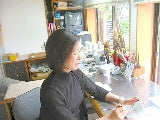
Draw hairline with Gosu. Paint with five color paints
12. Firing
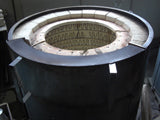
Fire between 1470ºF to 1800ºF centigrade
